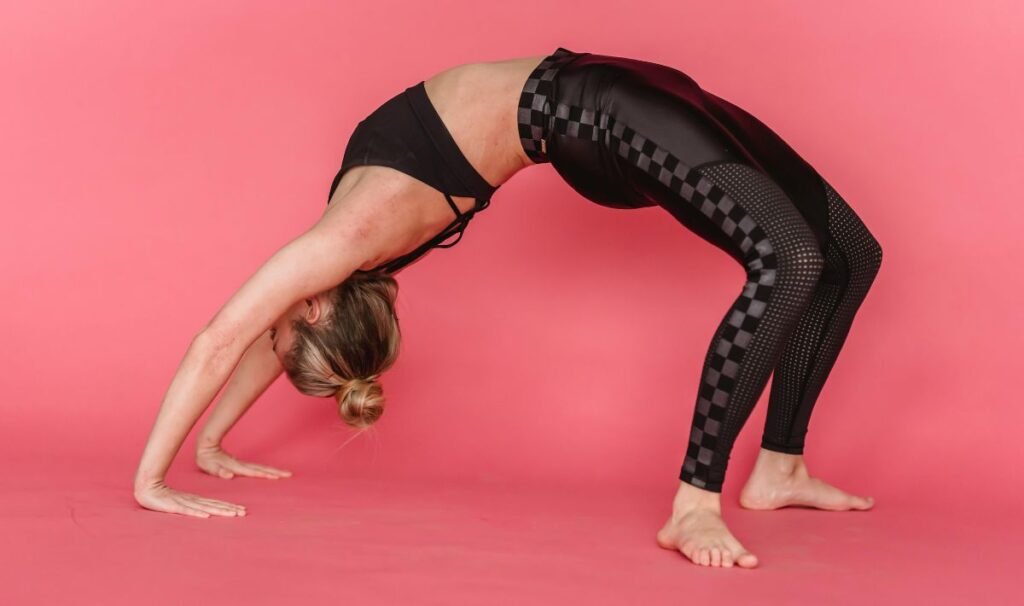Have you ever felt the need to stretch your back after a long day of sitting or working? Snake Pose, or Sarpasana, might be the perfect remedy. This yoga posture, inspired by the sinuous movements of a snake, helps build strength, flexibility, and a sense of calm. Whether you’re a beginner or an experienced yogi, mastering Snake Pose can elevate your yoga practice.
In this guide, we’ll dive deep into everything you need to know about Snake Pose. From its step-by-step instructions to practical tips and amazing benefits, you’ll discover why this posture is a must-add to your yoga routine.
What Is Snake Pose (Sarpasana)?
Snake Pose, also known as Sarpasana in Sanskrit, is a prone yoga posture that resembles the graceful, upward curve of a snake. It’s often practiced as a variation of Bhujangasana (Cobra Pose). While the Cobra Pose emphasizes a deeper backbend, the Snake Pose focuses more on strengthening the back and shoulders. This position encourages a gentle lift of the upper body without putting too much strain on the lower back, making it an excellent option for all levels of practitioners.
Why Practice Snake Pose?
Incorporating Snake Pose into your yoga practice offers numerous physical and mental benefits. Here are just a few reasons to try it:
Physical Benefits:
- Strengthens the Back Muscles: Snake Pose targets the muscles along your spine, helping improve posture and reduce back pain.
- Opens the Chest: This pose gently stretches the chest and shoulders, increasing flexibility and reducing tension.
- Improves Spinal Flexibility: By engaging your back in a controlled way, you’ll boost your spine’s range of motion.
- Enhances Lung Capacity: The chest-opening nature of the pose encourages deeper breathing, which benefits your respiratory health.
Mental Benefits:
- Relieves Stress: Stretching and opening up the body promotes relaxation and relieves stress.
- Boosts Confidence: The upward lift in the pose symbolizes vitality and confidence.
How To Do Snake Pose (Sarpasana)
Ready to slither into this rejuvenating posture? Follow these step-by-step instructions:
Step 1: Start in a Prone Position
Lie flat on your stomach with your legs extended straight back. Rest your forehead on the mat, and place your arms by your sides, palms facing down.
Step 2: Position Your Hands
Bring your hands behind your back and interlace your fingers. If interlacing your fingers feels challenging, hold a yoga strap or towel between your hands for assistance.
Step 3: Engage Your Core
Before lifting, gently engage your abdominal muscles to support your lower back. This activation protects your spine and ensures proper alignment.
Step 4: Lift Your Chest
Inhale deeply, lift your chest and head off the mat. Simultaneously, pull your interlaced hands (or strap) back and up, opening your chest further. Keep your gaze forward or slightly upward without straining your neck.
Step 5: Hold the Position
Hold the pose for 5-10 breaths, focusing on maintaining a smooth, even breath. Feel the stretch in your shoulders and the activation in your back muscles.
Step 6: Release
Exhale gently lower your chest and head back to the mat. Release your hands and rest for a moment before repeating the pose if desired.
Tips for Mastering Snake Pose
Achieving the perfect Snake Pose might take some time, but these tips will help you get there:
- Warm Up First: Prepare your body with light stretches or poses like Cat-Cow or Child’s Pose to loosen up your spine and shoulders.
- Engage Your Core: Activating your core muscles protects your lower back and ensures proper alignment.
- Don’t Overdo It: Avoid straining your neck or lower back. Keep the lift gentle and controlled.
- Use Props: If interlacing your fingers is difficult, use a strap or towel for support.
- Breathe Deeply: Focus on deep, diaphragmatic breaths to enhance the stretch and promote relaxation.
Common Mistakes to Avoid
Even seasoned yogis can make mistakes. Watch out for these common errors when practicing Snake Pose:
- Overarching the Lower Back: Avoid excessive arching, which can lead to discomfort or injury. Instead, engage your core to support your spine.
- Holding Your Breath: Remember to breathe deeply and evenly throughout the pose.
- Straining the Neck: Keep your gaze forward or slightly upward to prevent neck tension.
- Rushing the Lift: Snake Pose is about control. Take your time to lift and lower your chest with mindfulness.
Modifications for Beginners
If you’re new to yoga or find Snake Pose challenging, try these modifications:
- Reduced Lift: Instead of lifting your chest high, focus on a smaller, more comfortable range of motion.
- Forehead on Hands: If lifting your head feels too intense, rest your forehead on your hands and focus on gentle chest expansion.
- Use a Yoga Strap: Hold a strap behind your back instead of interlacing your fingers to reduce shoulder strain.
Advanced Variations
Once you’ve mastered the basics of Snake Pose, try these advanced variations to deepen your practice:
- Dynamic Snake Pose: Add a rhythmic movement by lifting and lowering your chest with each breath.
- One-legged Snake Pose: Lift one leg off the mat while holding the pose for added challenge.
- Snake Pose with Blocks: Place yoga blocks under your hands for extra elevation and intensity.
Benefits of Regular Practice
Practicing Snake Pose consistently can lead to transformative results, both physically and mentally. Here’s what you can expect:
1. Improved Posture
Snake Pose strengthens the muscles that support your spine, helping you stand taller and sit straighter.
2. Reduced Back Pain
By targeting and strengthening the back muscles, this pose alleviates common aches caused by sedentary lifestyles.
3. Increased Energy
The chest-opening aspect of the pose encourages deeper breathing, which boosts oxygen flow and energy levels.
4. Better Focus
The mindful nature of Snake Pose promotes mental clarity and focus, making it an excellent addition to your daily routine.
FAQs
1. Is Snake Pose suitable for beginners?
Yes! Snake Pose is beginner-friendly and can be modified to suit different levels of flexibility and strength.
2. How long should I hold Snake Pose?
Hold the pose for 5-10 breaths or around 30 seconds. Gradually increase the duration as you build strength.
3. Can Snake Pose help with back pain?
Absolutely. Regular practice strengthens the back muscles and improves spinal flexibility, which can reduce back pain.
4. What’s the difference between Snake Pose and Cobra Pose?
While both poses involve a lift of the upper body, Snake Pose emphasizes a more controlled and less intense backbend compared to Cobra Pose.
Final Thoughts
Snake Pose (Sarpasana) is more than just a yoga posture—it’s a gateway to better strength, flexibility, and mindfulness. Whether you’re looking to ease back pain, boost energy, or simply unwind, this pose offers something for everyone. With regular practice and mindful attention to your body’s needs, you’ll soon feel the transformative benefits of Snake Pose.
So, grab your mat, take a deep breath, and slither into this empowering pose. Happy practicing!

Sonu is a passionate yoga teacher with over 6+ years of experience helping individuals find balance, strength, and inner peace through the transformative power of yoga. As the creator of Pure Yoga Vibes, Sonu shares expert insights, inspiring practices, and a wealth of knowledge to support your wellness journey. Dedicated to creating a space for growth and mindfulness, Sonu’s mission is to make yoga accessible and enjoyable for everyone. For inquiries or collaborations, feel free to reach out at contact@pureyogavibes.com.



